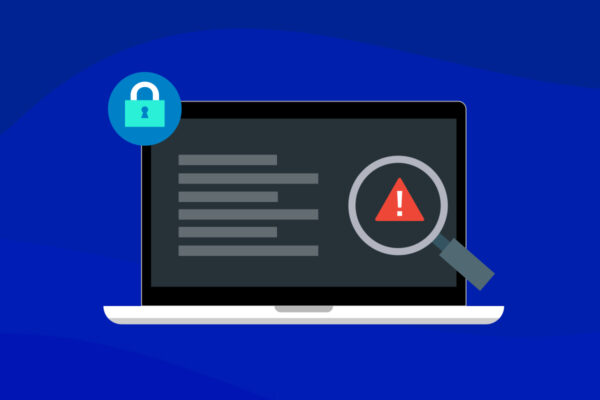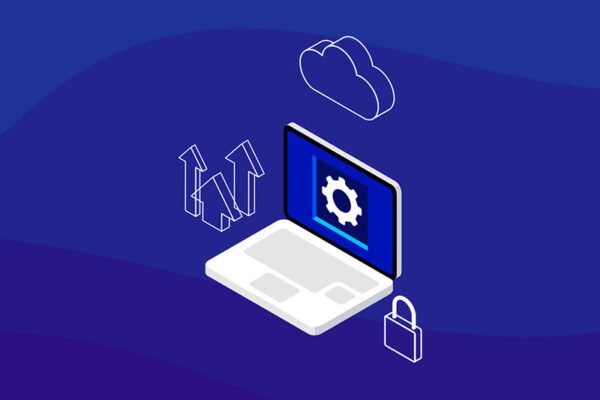What Is Secure Access Service Edge (SASE)?
In today’s rapidly evolving digital landscape, where remote work, cloud computing, cyberattacks and the Internet of Things (IoT) are becoming increasingly prevalent, traditional network security models no longer suffice. Cybercriminals are looking for any security weakness they can find and exploit. Add to this the fact that many businesses are supporting more remote work and more cloud-based applications than ever before, with infrastructure that’s not ideally designed to do that, and you’ve got a recipe for trouble.
But this is where SASE comes into play.
Secure Access Service Edge (SASE) is not just another buzzword; it’s a revolutionary network security framework designed to address the evolving needs of the modern digital landscape. At its core, SASE converges network and security services into a single, cloud-based architecture. That convergence provides a unified, holistic approach to security and network connectivity, providing unparalleled agility and scalability.
In this comprehensive guide, we will delve into the world of SASE, exploring its definition, goals and significance in today’s context. We’ll then dive into its differences from traditional network security and how it stacks up against other technologies like SSE and SD-WAN. We’ll also uncover the core components of SASE, how it works, its benefits and the challenges it presents.
What is Secure Access Service Edge (SASE)?
Secure Access Service Edge (SASE) is a cybersecurity framework that combines network security and wide-area networking (WAN) capabilities into a single, cloud-based service. The concept behind SASE is to provide organizations with a more agile, scalable and secure way to connect users and devices to applications and data, regardless of their location. Cloud-first SASE can help keep systems and data safe in a cloud-based world.
What is the goal of SASE?
The primary goal of SASE is to simplify network security and access for organizations. It aims to provide secure, reliable and consistent connectivity for users, regardless of their location or device, while also ensuring that data and applications remain protected from threats. SASE also enables smaller security teams to cover more ground more effectively.
Why do we use SASE?
The importance of SASE in today’s landscape cannot be overstated. With the increasing adoption of cloud services, mobile workforces and the proliferation of IoT devices, traditional security models often leave companies in a precarious position in terms of cybersecurity. However, SASE offers businesses a comprehensive solution to reduce cyber-risk by extending security policies and controls to the edges of the network, where users and devices are located.
How is SASE different from traditional network security?
SASE differs from traditional network security in several fundamental ways. Unlike legacy models that rely on a perimeter-based approach, SASE relies on a zero-trust approach. This means that SASE assumes that threats can originate from within the network. It also emphasizes the advantages of identity-based access control, continuous monitoring and micro-segmentation to enhance security.
SASE vs. SSE
SSE (Secure Service Edge) is often used interchangeably with SASE, but there are some subtle differences. While SASE combines network and security services into one platform, SSE primarily focuses on delivering security services at the edge of the network. SASE provides a more comprehensive approach, encompassing both networking and security aspects.
SASE vs. SD-WAN
SD-WAN (Software-Defined Wide Area Network) is an integral component of SASE, but they are not synonymous. SD-WAN optimizes network performance by dynamically routing traffic based on application requirements. SASE, on the other hand, adds security services to the SD-WAN model, ensuring secure and efficient access to cloud resources.
How does SASE work?
SASE operates by leveraging the cloud and converging multiple security and networking functions into a unified architecture. It dynamically enforces security policies based on user identities and device postures, ensuring that data and applications are accessed securely from anywhere. It makes networks more resilient and less likely to be easily penetrated by bad actors.
SASE is typically delivered as a cloud-native service, which means it leverages cloud infrastructure and services to provide its functionality. This allows for scalability, flexibility and ease of management. It also makes SASE a smart choice for network security in our increasingly cloud-based world.
What are the core components of SASE?
The core components of the SASE model include:
- Software-Defined Wide Area Network (SD-WAN): SD-WAN plays a crucial role in SASE by optimizing network traffic, ensuring efficient and secure connectivity.
- Secure Web Gateway (SWG): SWG protects against web-based threats and enforces security policies for web traffic, making it a critical element in SASE’s security framework.
- Cloud Access Security Broker (CASB): CASB provides visibility and control over cloud applications, ensuring that sensitive data remains secure when accessed via the cloud.
- Next-Generation Firewall (NGFW) and Firewall-as-a-Service (FWaaS): These components enhance security by inspecting and filtering traffic, preventing malicious activities and offering firewall capabilities in the cloud.
- Zero Trust Network Access (ZTNA): ZTNA ensures that users and devices are authenticated and authorized before accessing network resources, aligning with the zero-trust security model.
What are the benefits of SASE?
Implementing SASE yields several benefits, including enhanced security, improved network performance, reduced complexity and better user experience. It enables organizations to adapt quickly to changing circumstances and ensures that security is always in sync with network changes.
What are the challenges of SASE?
While SASE offers numerous advantages, it also presents challenges, such as integration complexities, potential latency issues and the need for skilled personnel to manage the platform effectively. Organizations must carefully plan their SASE implementation to overcome these challenges successfully. SASE solutions that offer a wide array of simple integrations can make SASE implementation significantly less challenging.
As the digital landscape continues to evolve, Secure Access Service Edge (SASE) emerges as a game-changer in network security. By converging network and security services into a cloud-based architecture, SASE empowers organizations to provide secure, reliable and agile connectivity in an increasingly complex and dynamic environment. Embracing SASE is not just a security upgrade. It’s a strategic move towards a more adaptable and secure future
Implement SASE with Datto Secure Edge
Datto Secure Edge is a cloud-managed access solution for the growing remote workforce community. Managed service providers can simplify network access and deliver improved security compared to a traditional VPN solution.
Make hybrid work easier: Say goodbye to legacy firewalls and patchwork VPNs, and hello to a single, cloud-based solution for your hybrid workforce
Deliver seamless security: Datto Network Manager allows you to easily manage security and network controls. These include:
- DNS/application filtering
- Secure Wi-Fi
- Next-gen firewall features
- Encrypted VPN
- 2FA
Ensure connection to SaaS applications: Go beyond filtering to prioritize the critical business apps that matter most to daily productivity
Deploy in minutes: Secure Edge is simple enough to let you rapidly deploy by yourself. Our all-in-one solution is easily consumable and renewable to our customers
Streamline your vendors: Securely and seamlessly integrate with Datto solutions, such as Datto RMM and Datto Networking. You can also use your existing identity management tools, all while leveraging our 2FA-protected Partner Portal




